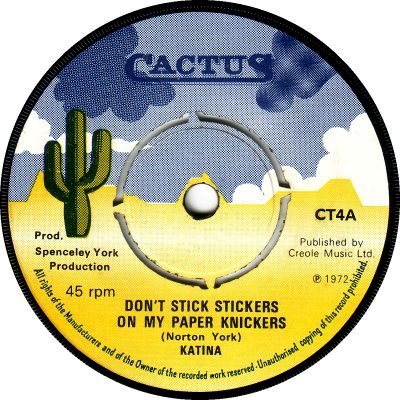
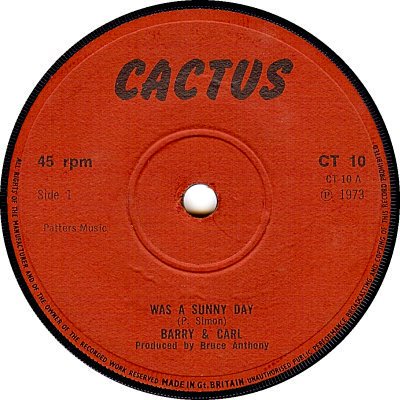
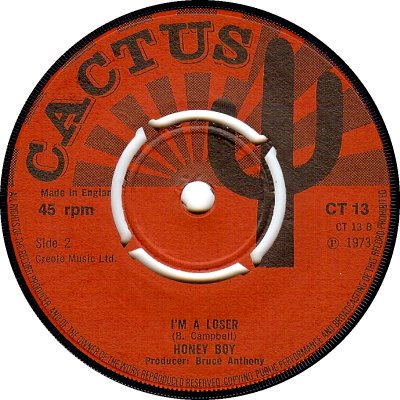
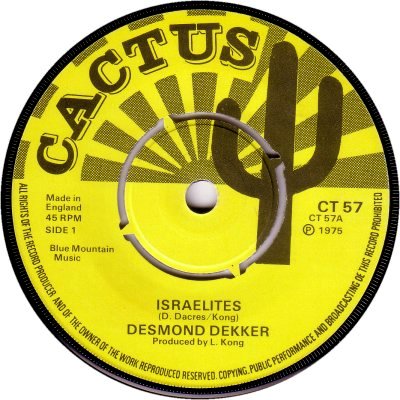
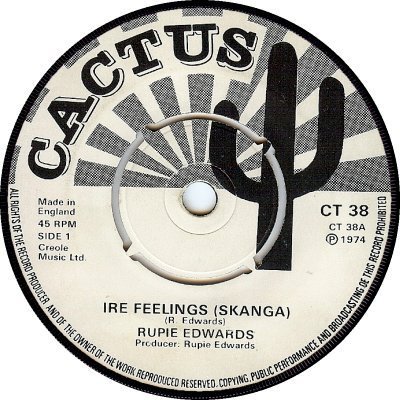
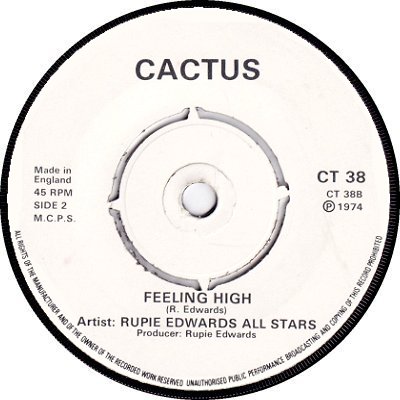
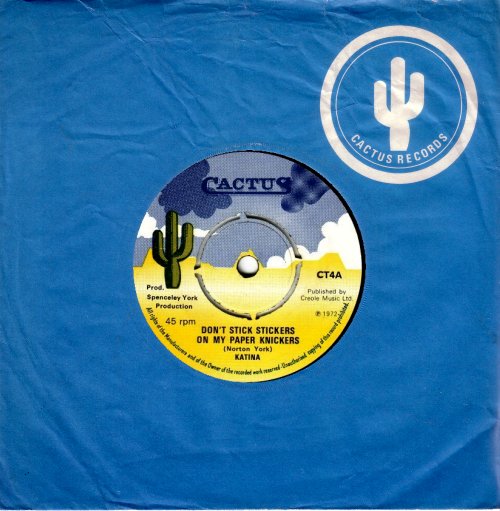
One of the arms of Bruce White and Tony Cousins's 'Creole Music'. 'Music Week' of the 6th of May 1972 reported that Creole, which already had a Reggae label of that name (q.v.), had formed a new label for Pop releases only and had licensed it to Chalk Farm studios, with distribution via the British Independent Record Distributors group. A later issue (17th June) added EMI and Creole themselves to the distributors. In the event the links with Chalk Farm and BIRD seem to have lasted for just three releases, spanning around six months, and the 'Pop' designation turned out to be not much longer-lived. At some point in or around Spring 1973 Creole appears to have had a rethink, as from CT-7 onwards Cactus was dedicated to Reggae music - the 'Creole' Reggae label had been inactive for over a year by then. After the split with BIRD, distribution was undertaken by EMI with Creole adding sales from its own vans in London, Manchester and the Midlands ('MW', 30th November 1974). In November 1974 Creole set up a new Pop label and called it 'Creole', which effectively meant that the old Creole (Reggae) and Cactus (Pop) labels had swapped functions. It also added a Country label, 'Cactus Country' (q.v.), which proved to be short-lived. When Creole switched to CBS for manufacture and distribution, in October 1977, Cactus moved with it.
Manufacturing seems to have been mainly by Orlake up to 1975, though EMI did some pressings during that period: certain popular singles can be found in both forms. Orlake labels have a smooth narrow outer ring with a rougher inner surface; EMIs are smoother, and their perforations (where they have been perforated for dinking) are narrower than the Orlakes - compare the third and fourth scans above. EMI took over manufacture at the start of 1975, and remained responsible for it until the move to CBS. Three different label designs were used for Cactus singles: the first one (1) was used during the 'Pop' period, and came with a company sleeve (7). With the change of musical direction and the release of CT-7 it was replaced by a plain red label with black printing (2). The plain label was swiftly embellished by the addition of a large picture of a cactus, and the logo was changed (3). After only a couple of issues the red colour turned yellow (4), which made for easier reading. CT-9 was the first to feature the yellow label but CTs 10 and 12 were plain red and 11 and 13 red with a cactus; the yellow one only came into permanent use with CT-14 - perhaps CT-9 was issued after CTs 10 to 13, despite its lower number? Both of the red scans and the first white one (5) come by courtesy of Robert Bowes - I would imagine that the white one was a consequence of a shortage of the yellow variety when the Rupie Edwards single concerned became a hit. That single also came with a plain white label, as the scan kindly provided by Sam Mauger shows (6); presumably this was another result of the same shortage. Cactus enjoyed quite a long life and tasted chart success with two Rupie Edwards singles, a couple of Desmond Dekker reissues and no fewer than seven Judge Dread efforts.
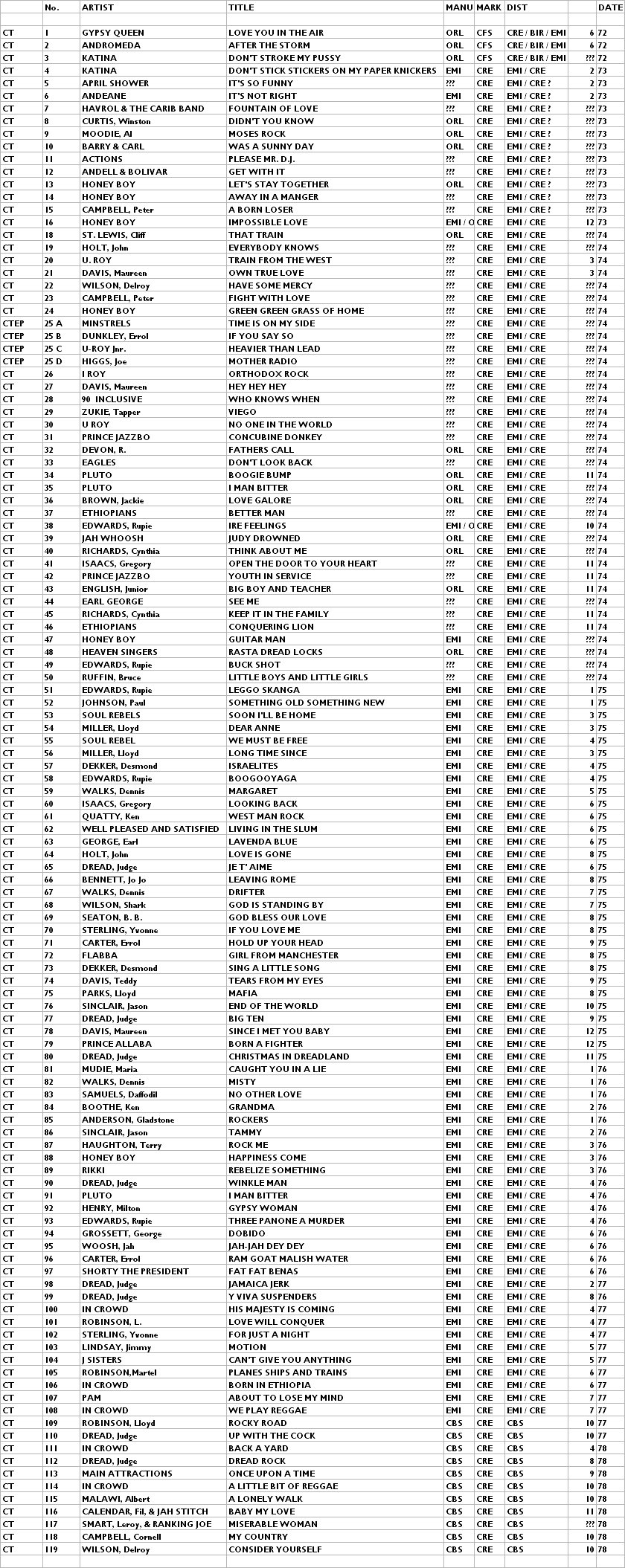
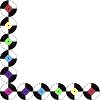
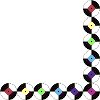
Copyright 2008 Robert Lyons.

